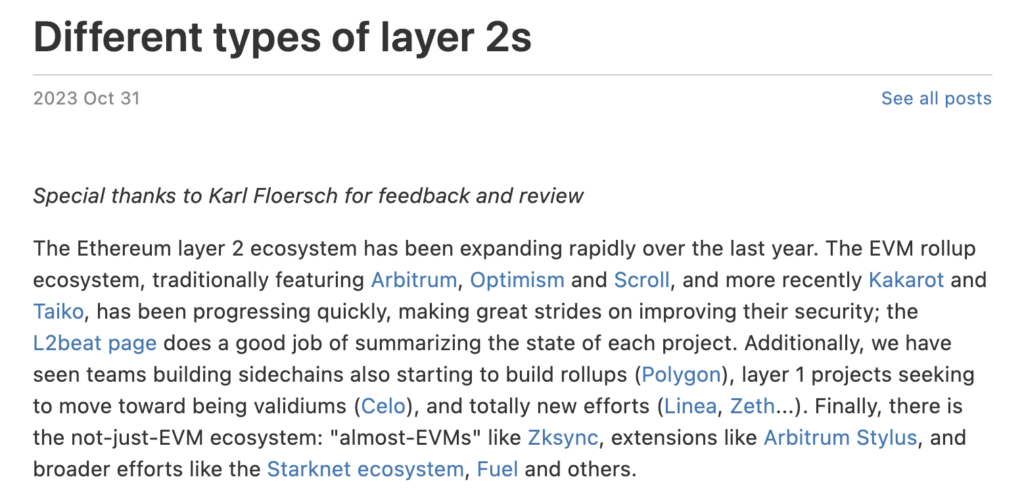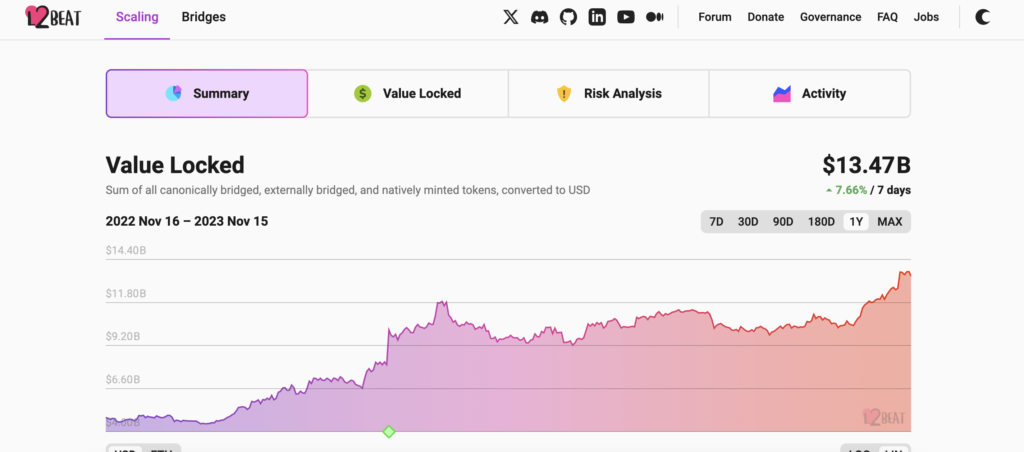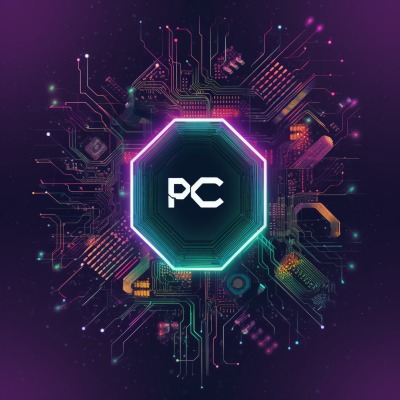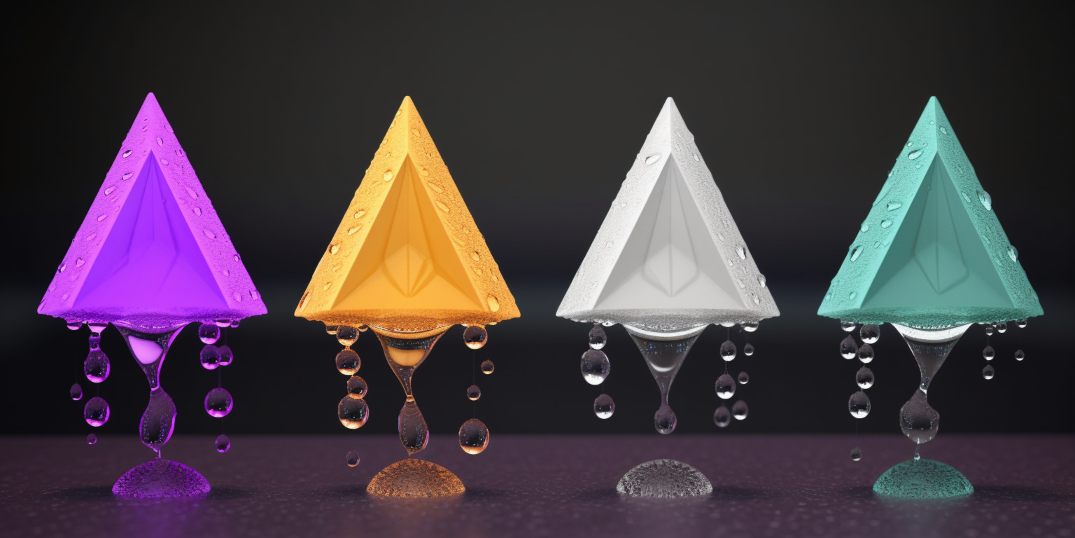In the blockchain world, Ethereum has emerged as a dominant force due to its smart contract functionality, vibrant ecosystem, and widespread adoption. However, Ethereum has faced scalability issues, leading to high transaction costs and slower speeds. To mitigate these issues, Ethereum Layer 2 solutions have been developed. These solutions are secondary networks or chains positioned on top of the Ethereum mainnet to offload processing tasks, thereby increasing speed and reducing fees.
In this post we will explore the most promising Ethereum Layer 2 blockchains and give a comprehensive list of ETH L2s.
If you’re looking to buy ETH, we recommend MEXC or ByBit crypto exchanges (our referral links with bonuses).
What is Layer 2 blockchain?
Layer 2 blockchains, or Layer 2 solutions, are critically important for Ethereum for several reasons:
1. Scalability: Ethereum can process roughly 15-20 transactions per second (TPS). This is quite limited, especially when compared to centralized systems like Visa, which can handle thousands of transactions per second. Layer 2 solutions help Ethereum scale by processing transactions off the main Ethereum blockchain (Layer 1), thereby significantly increasing throughput.
2. Lower Transaction Costs: The Ethereum network has faced significant congestion due to its growing popularity, leading to high gas fees (transaction costs). These high costs can be a barrier for many users and applications. Layer 2 solutions can mitigate this problem by bundling many transactions into a single one, dramatically reducing the cost per transaction.
3. Speed: Transactions on Ethereum can take some time to confirm, especially during peak network usage. Layer 2 solutions often offer faster transaction times, improving the user experience, especially for applications that require rapid interactions like gaming or decentralized finance (DeFi).
4. Interoperability: Some Layer 2 solutions, like sidechains, can also provide interoperability with other blockchains, opening up new possibilities for decentralized applications (dApps) and enabling greater collaboration and communication across different blockchain ecosystems.
5. Greater Accessibility: By reducing costs and increasing speed, Layer 2 solutions can make Ethereum and its dApps more accessible to a broader user base. This is essential for mainstream adoption of blockchain technology.
Layer 2 solutions are a crucial part of Ethereum’s evolution, enabling it to meet growing demand while mitigating issues related to scalability, cost, and speed. They are helping to pave the way for a more scalable, accessible, and sustainable decentralized future.
15 Best Ethereum L2s List
The following is a comprehensive list of the best Ethereum Layer 2 Blockchains. You can buy most of these coins on centralized exchanges like ByBit or MEXC (referral links with bonuses).
1. Polygon zkEVM
Polygon zkEVM is the first zero-knowledge scaling solution fully equivalent to an Ethereum Virtual Machine (EVM). This platform combines the best of Ethereum and sovereign blockchains into an attractive feature set, providing scalability while ensuring a superior user experience in a multi-chain environment.
2. Optimism
Optimism is an Ethereum Layer 2 solution that aims to achieve scalability by using a technology called Optimistic Rollups. This technology allows for low-cost, lightning-fast transactions, making it a popular choice for developers looking to build scalable dApps.
3. Arbitrum
Arbitrum is another Layer 2 solution that employs Optimistic Rollup technology. It offers a low-cost, highly efficient environment for building secure Ethereum dApps while maintaining compatibility with existing Ethereum contracts and tools.
4. Starknet
StarkNet is a decentralized, zk-Rollup operating as an Ethereum Layer-2 scaling solution. It provides scalable and secure smart contract computation and allows developers to build dApps with low gas costs.
5. Mantle
Mantle, initiated by a decentralized autonomous organization (DAO) and incubated by BitDAO, stands as a groundbreaking modular Layer 2 protocol on the Ethereum blockchain. It introduces new dimensions to the utility of BitDAO’s governance token, BIT, and opens up exciting possibilities for the decentralized finance (DeFi) ecosystem.
6. zkSync
zkSync Era is a Layer-2 protocol that scales Ethereum with cutting-edge ZK tech (ZK stands for zero-knowledge). The mission is to increase Ethereum’s throughput and also fully preserve its foundational values – freedom, self-sovereignty, decentralization – at scale.
7. Scroll
Scroll is a zkEVM-based zkRollup on Ethereum that enables native compatibility for existing Ethereum applications and tools. Scroll alpha testnet is live.
8. Gnosis
Gnosis Chain serves as an execution-layer EVM Layer 2 sidechain that enables the seamless development of decentralized applications (DApps) and non-fungible tokens (NFTs). Built on the Gnosis Beacon Chain and utilizing the xDai stablecoin, Gnosis Chain provides a robust infrastructure for transactions, smart contracts, and gas fees. The native token, GNO, plays a vital role in staking on the Gnosis Beacon Chain and governing the GnosisDAO, further enhancing the ecosystem’s sustainability and decentralization.
9. Celer Network
Celer Network is a blockchain interoperability protocol that enables fast, easy, and secure off-chain transactions. It operates on Ethereum and Polkadot, providing a Layer 2 scaling solution that enhances the overall performance of the blockchain.
10. ImmutableX
ImmutableX is a Layer-2 scaling solution specifically designed for games and NFTs on Ethereum. It provides zero gas fees for minting and trading, making it an attractive solution for game developers and NFT creators.
11. Metis
Metis is a scalable and sustainable Layer 2 scaling solution developed on the Ethereum blockchain. It aims to empower businesses and developers to quickly build and manage their own decentralized applications (dApps) and DAOs.
12. Cartesi
Cartesi is an application-specific rollup execution layer with a game-changing Linux runtime. It operates on multiple chains, including Ethereum, Polygon, Arbitrum, Optimism, Gnosis Chain, and Multichain.
13. Eclipse
Eclipse is a customizable rollup provider that allows users to “pick and choose” parts of different chains. It operates on several chains, including Celestia, Cosmos, Ethereum, Injective, NEAR, Polygon, Solana, and Multichain.
14. Reddio
Reddio is a platform that helps users adopt blockchain technology with easy-to-use Layer 2 zkRollup agnostic APIs. It operates on Ethereum and Starknet.
15. Canvas Connect
Canvas Connect is a privacy Layer-2 blockchain that offers confidential, scalable, and low-cost transactions using ZK rollups. It operates on the Ethereum chain.
ETH L2s Future
In conclusion, Layer 2 solutions have come a long way in addressing the scalability issues of Ethereum. They are the key to Ethereum’s future success and widespread adoption. It’s an exciting time for developers and users alike as these solutions continue to evolve and bring new possibilities to the Ethereum ecosystem.
These projects are at the forefront of the Layer 2 revolution, enabling enhanced scalability, interoperability, and governance within the Ethereum blockchain. As the crypto space continues to evolve, these innovative solutions hold immense potential in shaping the future of decentralized applications and expanding the possibilities of blockchain technology.
A lot of new projects is discussed in a recent text about different type of L2s by Vitalik Buterin on his blog.

Also worth looking at is L2Beat website that offers an overlook of various L2s together with data related to how advanced they are. The following is a snapshot of L2Beat data with their list of recent L2s.

Worth mentioning is also their list of Upcoming L2 projects.
These for example include Canto, a DeFi-oriented blockchain built with Cosmos SDK, that is reorienting towards RWA (Real World Assets) narrative.
If you want to understand more about Layer 2s on Ethereum and why they are important, watch my video:


Leave a Reply